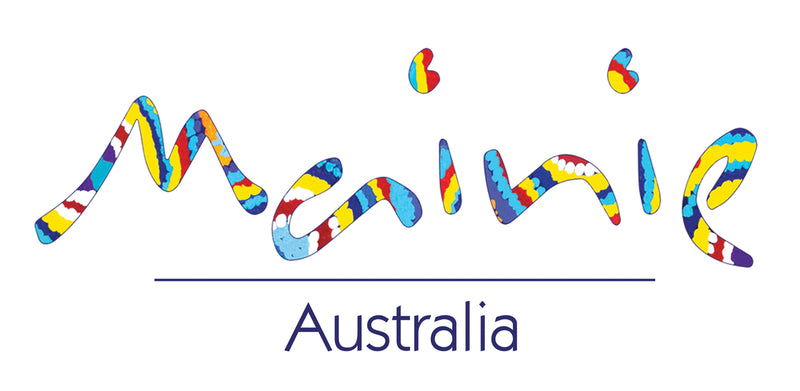MAINIE FAQ

The four most frequently asked questions we receive at Mainie:
- How and where are Mainie products made?
- Where does your Aboriginal art come from?
- How are the Aboriginal artists paid for their work?
- Why is Australia’s Aboriginal art so special?
How and where are Mainie products made?
The provenance of the textiles we use to create each of our carefully handcrafted Mainie fashion pieces is just as important to us as the ethical sourcing of our authentic Aboriginal art designs.
Mainie’s premium quality silks originate from the ancient city of Suzhou in Jiangsu Province, China. Situated in the Yangtze Delta and known as the Venice of the East, Suzhou has been an important silk making centre for over 4,000 years.

Suzhou - The Venice of the East
Silk is not produced in Australia. Mainie’s luxurious wool scarves however are made with the finest Woolmark certified, Australian grown Merino wool.
 Australian Merino wool fleece
Australian Merino wool fleece
Mainie sources only the best materials from reputable companies that have undergone rigorous site inspections to ensure that their production processes, workplace conditions and environmental management practices are compliant with international standards and regulations.
Mainie manufacturers operate modern factories with state-of-the-art digital printing facilities and are suppliers of high-quality textiles to luxury fashion houses in Europe, Japan and the USA.
Mainie’s silk and wool fashion products are hand finished and feature specialised artisan touches such as hand-sewn rolled hems.
 Artisan skills - Hand sewn finishes on Mainie's fashion pieces
Artisan skills - Hand sewn finishes on Mainie's fashion pieces
Mainie has recently added a range of vegan friendly scarves featuring designs by traditional Aboriginal women artists from Central Australia, and contemporary Aboriginal artists from Far North Queensland. Made from a plant-based textile called Modal, our new scarf range is made especially for socially conscious consumers who are seeking ecologically sustainable alternatives to animal-derived textiles such as silk and wool.
Where does your Aboriginal art come from?
Most of the Aboriginal artwork designs featured in the Mainie fashion collection were painted by traditional Warlpiri women artists from the remote Tanami Desert region in Central Australia.
These designs depict age-old Aboriginal Dreaming stories that have been handed down to the artists through many generations of their Warlpiri ancestors over tens of thousands of years.

Traditional Warlpiri women artists from the Warlukurlangu arts centre in Central Australia. Clockwise from top right: Christine Nakamarra Curtis, Mary Napangardi Gallagher, Bessie Nakamarra Sims, Geraldine Napangardi Granites, Long Maggie Nakamarra White
Mainie also sources artworks from contemporary Aboriginal artists in Far North Queensland.
How are the Aboriginal artists paid for their work?
The artwork designs featured in the Mainie fashion collection are ethically purchased from Aboriginal owned and controlled arts centres under strict licensing conditions in accordance with the Indigenous Art Code.
Under the terms of the art licensing agreements, Mainie purchases the original artworks at the prices set by the Aboriginal artists. The artists retain the copyright to their designs and Mainie pays art royalties to the artists and their families for every piece that we produce for sale.
As an Aboriginal owned and operated business, Mainie embraces social responsibility ethics and is committed to supporting Aboriginal women artists to earn an income from their own work and preserve their traditional cultural heritage for future generations.
Mainie is a Supply Nation verified Indigenous owned business and an approved Dealer Member of the Indigenous Art Code.
 Why is Australia’s Aboriginal art so special?
Why is Australia’s Aboriginal art so special?
Australia’s Aboriginal art is the world’s oldest unbroken arts tradition.
Scientists have found evidence of pigment art in Australia dating back to when Aboriginal people first arrived on the continent around 60,000 years ago.

Rock art site at Uluru on the traditional homelands of the Anangu Aboriginal people
Aboriginal art from the remote Central and Western Desert regions is particularly valuable because many of the artists are among the last generation of Aboriginal people in Australia who had their first encounter with white people on their tribal homelands in the latter part of the twentieth century.
To this day, the artists from the Aboriginal tribes in the remote desert regions continue to speak their own languages and practice their time-honoured customs and ceremonies.
Aboriginal owned and controlled art centres have been established in some of the desert communities in Central Australia to act as important strongholds for the preservation of traditional stories and designs.
The Aboriginal artists painting at these arts centres are keeping alive their spiritual and cultural connections to their country and their ancestors through their art.

Photo courtesy of Warlukurlangu Artists, an Aboriginal owned and controlled arts centre located on the traditional homelands of the Warlpiri people in the Tanami Desert region of Central Australia.
Learn more about the Mainie story at https://www.mainie.com.au
